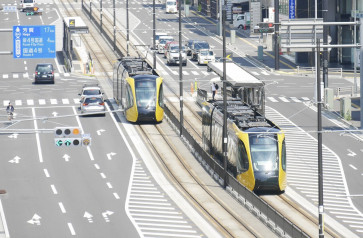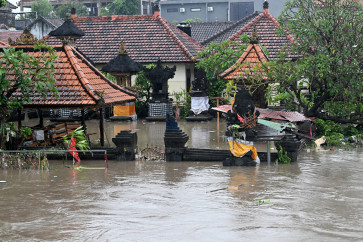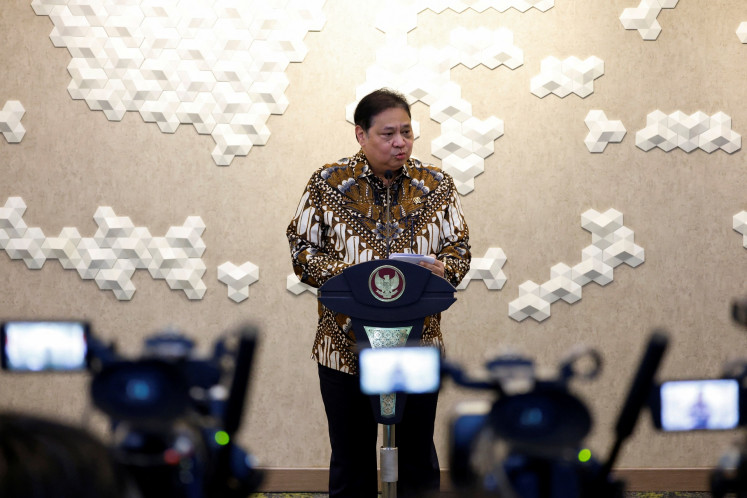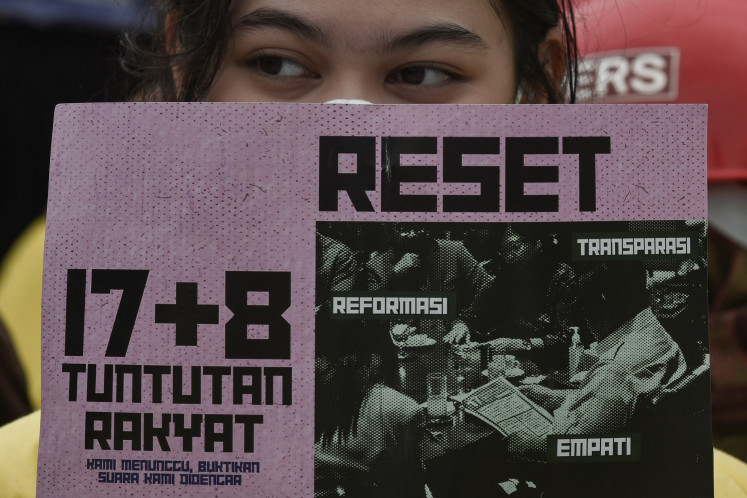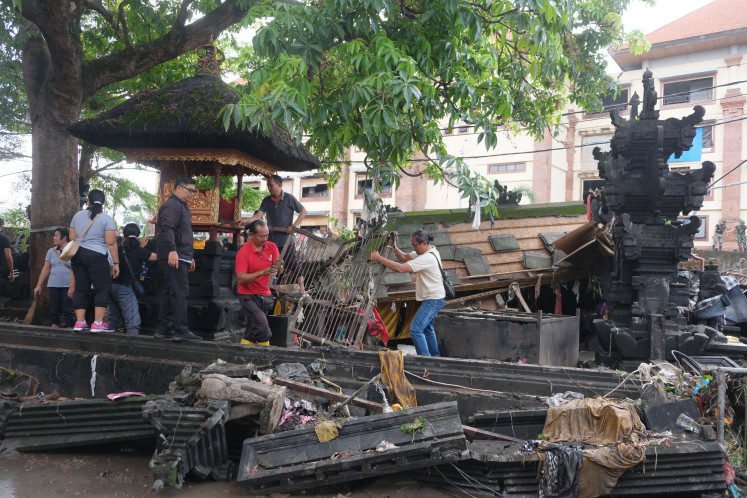Popular Reads
Top Results
Can't find what you're looking for?
View all search resultsPopular Reads
Top Results
Can't find what you're looking for?
View all search resultsNew challenges for agricultural development
Gift exchanges were common among relatives, friends and colleagues as one year’s end approached with the beginning of a new year, representing happiness and joy in the turning of the calendar
Change text size
Gift Premium Articles
to Anyone
G
ift exchanges were common among relatives, friends and colleagues as one year’s end approached with the beginning of a new year, representing happiness and joy in the turning of the calendar.
In contrast with these happy feelings and gifts enjoyed by so many at the year’s turn, farmers and the farming world in Indonesia received a surprising gift of their own at the end of 2010 in the form of a huge rice import from Thailand.
As reported by The Jakarta Post on Dec. 23, 2010, RI’s rice imports reached 1.33 million tons in 2010 to maintain stockpiles and help ease consumer prices.
The main consideration for importing the rice was the failure to meet production targets due to natural disasters, climate anomalies and pest attacks.
Even though the government is very optimistic about maintaining rice self-sufficiency, as was accomplished in 2008-2009, it is not easy to maintain stable rice production. Success of food production is highly dependent on many factors such as land size, farming inputs, techno-logy, infrastructure and financing, as well as product marketing and farmer institutions.
Instability and problems with rice production, marketing and distri-bution are typical issues in Indonesia’s agricultural development. Many new challenges need to be properly addressed.
The second Cabinet of President Susilo Bambang Yudhoyono has proposed seven strategies for agricultural revitalization regarding farmland, seed provision, infrastructure, human resources, financing, farmer institutions and industrial development related to agricultural sector.
Overall, progress in revitalizing each sector has come, but not enough. More new breakthroughs in each developmental issue should be designed and proposed.
The policy of farmland reform that was campaigned on in SBY’s first cabinet in fact has been very slow in implementation. Land reform policy takes the form of farmland distribution for poor and landless households.
If land reform policy is implemented based only on political popularity and without comprehensive supporting programs, impacting results to improve farmers’ prosperity and wealth will be difficult to realize.
As reported by the Post on Oct. 25, 2010, SBY presented symbolic land certificates granting 260 hectares of land to more than 5,100 farmers in four villages in Cilacap, Central Java. Each farmer received 500 square meters of land.
Political popularity is likely the more dominant motivator in this distribution of very small plots of farmland, considering that the efficiency and productivity of farming such small plots is of little
benefit.
It is hard to imagine any real impact made in improving farmers’ income by cultivating only 500 square meters of land.
If each targeted farmer would be granted at least 2,500 or even 5,000 square meters of land, then the impact would be visible. Supported by related farming activities, farmers could grow cash crops to earn more income.
Although, as a consequence of this, the number of recipient farmers would have to be reduced.
Instead of granting land, the government could offer different types of support programs for farming households who do not receive land. Many types of rural industries, livestock, handicrafts and food processing can be alternatives.
Regarding revitalization of seeds, some critical problems emerge. Farmers are still facing difficulties in accessing high-quality seeds. High seed prices from the monopolies or oligopolies of multi-national and national corporations have been hampering farmers.
Full use of local resources such as high-quality seeds and environmentally friendly fertilizers will also benefit local farmers. For the solution of the seed problem, research and development of high-quality, mass-produced seeds sold at reasonable prices must come from research institutes, universities, the central and local governments, non-governmental organizations and farmer groups. In this sense, seeds could be considered semi-public goods.
Related to infrastructure, water access is among the most crucial factors. Poor maintenance of irrigation facilities occur in many places. Central and local governments need to invest appropriately in irrigation facilities. Water shortage is the main problem amid the global climate change. Therefore, water should be managed and used wisely.
Proper development of rural markets and roads will also support various related activities of farming households, such as input-provision and product marketing.
Quality improvement of human resources can be done through well-organized agricultural extensions, formation and activation of farmer groups and associations providing greater opportunity for them
to participate in decision making processes.
As has been implemented by the central government, financial support for agricultural production
and marketing are very important elements.
Extending various credit schemes for farming activities involving farmer groups would be useful.
The revitalization of agricultural institutions is closely related to the agricultural extension institution.
Implementation of the Law on Extension Systems of Agriculture, Fisheries and Forestry to some
extent mandates improvements in services.
However, many problems occur in the formation of extension bodies at any administrative level and the under-funded local governments’ commitment to financial support and operation of the body will suffer.
Industrial sector development related to agricultural product processing is also moving at a snail’s pace. Many agricultural products have been traded and exported in raw form or semi-processed with low value added. Most of RI’s commodity exports are crude palm oil, sheet rubber, dried coffee and cocoa.
One of the future challenges of industrial development will be to produce various refined agricultural products of higher quality and value added.
Incentives should be offered to develop the industrial sector. Linkage and integration among small scale producers, producer cooperatives, local traders, processing industries and exporters should be highly promoted.
Concrete support from the central government will speed-up improvement in agricultural productivity.
Better pricing policies will also improve farming households’ income. Significant improvements in productivity and commodity prices will directly determine our food security and farmers’ well-being.
The writer is a lecturer at the School of Agriculture, Gadjah Mada University, Yogyakarta.



